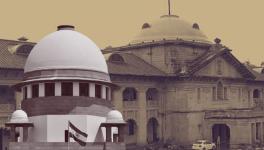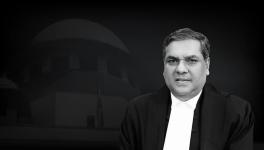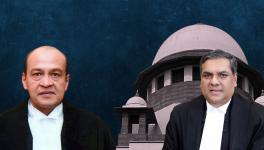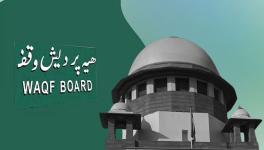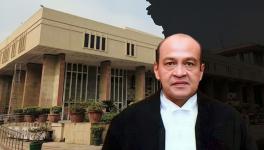Breaking on The Leaflet: Justice Varma Probe Report
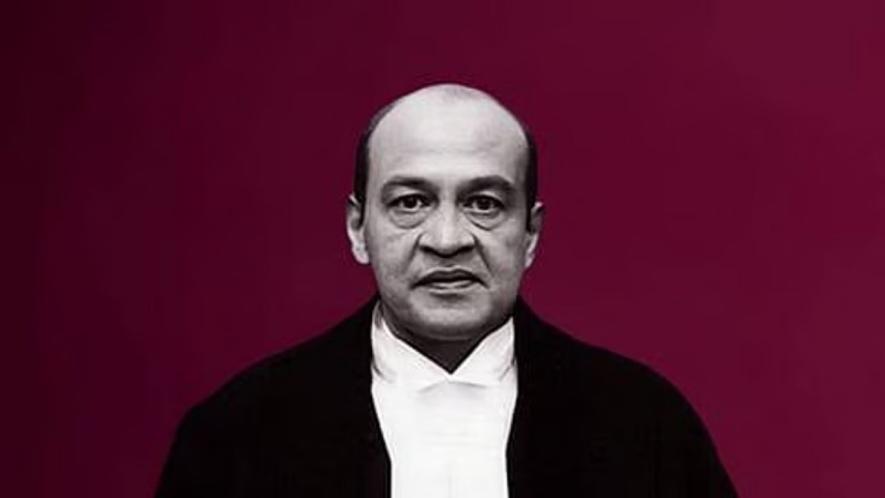
Ten days, 55 witnesses, several sittings and visits to the scene of the accidental fire that started at about 11.35 pm on March 14 at the official residence of a (then) sitting Delhi High Court Judge – Justice Yashwant Varma - that scarred the higher judiciary like few instances earlier.
Apart from sharing every evidence and statement of various witnesses with Justice Varma “in compliance of principles of natural justice” the three-Judge probe panel also video recorded every statement “in order to ensure that the veracity of the same throughout could not be challenged at a subsequent point of time and also for confirmation whether such statements were in sum and substance recorded correctly”.
The end result? Two damning paragraphs at the end of the 64-page report by the panel, which concludes that “cash/money was found in the store room of 30 Tughlak Crescent, New Delhi officially occupied by Justice (Yashwant) Varma” and that the “access to the store room (where the cash was kept) has been found to be within the covert or active control of Justice Varma and his family members and that by way of strong inferential evidence, it is established that the burnt cash/money was got removed from the store room during the wee hours of 15.03.2025 from 30 Tughlak Crescent, New Delhi”.
At least 10 witnesses examined by the panel acknowledged having seen burnt or half-burnt currency notes.
“The half-burnt currency notes seen and found during the process of dousing of fire are highly suspicious items and more so are not of small amount or denomination which could not have been placed in the store room without the tacit or active consent of Justice Varma or his family members,@ the panel notes in its report.
In its recommendation, the panel said, “Keeping in view the direct and electronic evidence on record, this Committee is firmly of the view that there is sufficient substance in the allegations raised in the letter of Hon’ble the Chief Justice of India dated 22.03.2025 and the misconduct found proved is serious enough to call for initiation of proceedings for removal of Justice Yashwant Varma, Judge of the Allahabad High Court.”
At least 10 witnesses examined by the panel acknowledged having seen burnt or half-burnt currency notes.
One witness, for example, said, “As I entered, I noticed that on the right hand side and in front, there was large pile of cash only of Rs. 500/- denomination lying on the floor. I am not sure whether any such notes of Rs. 500/- denomination were there on the ledge or not. I was shocked and surprised such large amount of cash which was strewn on the floor, which I saw for the first time in my life.”
Apart from the Judge, the committee also examined the suspicious role in alleged destruction of evidence or cleaning of the spot of the fire by Justice Varma’s Private Secretary Rajinder Singh Karki and his daughter, Diya Varma.
Karki, for example, allegedly instructed firemen dousing the fire not to mention in their report about the burning of currency notes and also getting the room cleaned the next day, both of which he refuted. However, statements of other witnesses as well as electronic evidence proved otherwise.
As first reported by this reporter last month, the panel comprising Chief Justice of the Punjab and Haryana High Court Sheel Nagu, Chief Justice of the Himachal Pradesh High Court GS Sandhawalia and Karnataka High Court Judge Anu Sivaraman, set up by the then CJI Sanjiv Khanna on March
22 to look into the allegations of cash recovery after the fire incidence at the residence of Justice Yashwant Varma, now transferred back to Allahabad High Court, has recommended his impeachment.
The panel recommended: “Keeping in view the direct and electronic evidence record, this Committee is firmly of the view that there is sufficient substance in the allegations raised in the letter of Hon’ble the Chief Justice of India dated 22.03.2025 and the misconduct found proved is serious enough to call for initiation of proceedings for removal of Justice Yashwant Varma, Judge of the Allahabad High Court.”
Answering the three issues that the panel had framed for itself to answer at the beginning of the probe, it concluded:
Whether burnt currency was found in the store room at 30 Tuglak Crescent, New Delhi: Yes; whether the store house is within the premises of 30 Tughlak Crescent, New Delhi or not: Yes; and lastly, how Justice Varma accounts for presence of money/cash in the store room: He couldn’t.
Here’s what the probe panel wrote about each of the three issues:
Whether burnt currency was found in the store room at 30 Tuglak Crescent, New Delhi: “The burden to prove this assertion was upon this Committee. This burden has been discharged by this Committee by recording the aforesaid findings based on statements of eye witnesses (firemen and police personnel) corroborated by electronic evidence of still photographs and videos which have been proved to be shot by the said eye witnesses at the coordinates which coincide with the location of the store room. More so the discussion supra reveals a number of corroborative pieces of evidence to establish that the burnt currency notes were seen and found in the store room by the firemen as well as police personnel.”
It then further records: “It is only when this Committee found the factum of burnt currency having been seen and found in the store room to be established, the burden shifted upon Justice Varma to raise his defence by disproving the aforesaid factum. As explained above, Justice Varma has failed to discharge this burden compelling this Committee to hold that the burnt cash was found in the store room in the night intervening 14/15.03.20”.
It then holds: “As such the objection of Justice Varma that he has been put to a disadvantage by having to disprove that the burnt currency notes were not found in the store room needs to be rejected at the very outset.”
To the second sub issue of whether the store house is within the premises of 30 Tughlak Crescent, New Delhi or not, the panel concluded: “This also stands established by the fact of this Committee having found that the tacit and active control of the access to the store room was with Justice Varma and his family members and well monitored without any outsiders getting access to it without permission. In this view of the matter, the objection of the store room being situated at a distance from the residential portion of the bungalow fades into insignificance.”
With regard to the third question of how Justice Varma accounts for presence of money/cash in the store room, the report says, “This sub issue assumes relevance and importance only when the burnt cash was established to have been found in the store room. The factum of the burnt cash having been found in the store room was undeniably established and therefore, the burden shifted upon Justice Varma to account for the said cash/money by giving a plausible explanation which he failed to do except projecting a case of flat denial and raising a bald plea of conspiracy.”
It then adds: “Where presence of burnt cash in the store room is established, it is for Justice Varma to account for the same by either successfully raising a defence of planting of cash in the store room which he failed to do or proving the defence of conspiracy theory by adducing evidence/material that the money/cash did not belong to him but to someone else by disclosing the identity of the real owner of the cash. Not having done so, Justice Varma cannot be helped and therefore, this Committee holds that the money/cash was found in the store room located within the premises of 30 Tughlak Crescent, New Delhi occupied by Justice Varma, the source of which could not be accounted for by Justice Varma.”
To the issue of “persons removing the burnt money/cash in the wee hours of 15.03.2025”, the panel concludes: “A conjunctive reading of the statements of eye witnesses, electronic evidence and the circumstantial evidence, which has come on record, as explained supra and the failure of Justice Varma and his personal staff to explain the omissions, contradictions and embellishment, noticed in their statements, this Committee is compelled to hold by way of strong inferential evidence on record that the most trusted personnel of domestic staff i.e. Rahil/Hanuman Parshad Sharma and Rajinder Singh Karki, Private Secretary to Justice Varma were instrumental in removing the burnt money/cash from the store room during the wee hours of 15.03.2025 sometime after the firemen/Delhi Police personnel had left the premises.”
As for the claim that the store room was “very porous and open to all”, the panel concluded that, in view of the categorical statement of the security personnel to the contrary, this can’t be accepted.
“In the absence of any plausible explanation coming from Justice Varma or his family members or for that matter any other witness, this Committee is left with no option, but to hold that the trust reposed in him was belied by him by allowing highly suspicious material in the shape of piles of currency notes to be stashed in the store room. Whether this stashing was done with tacit or explicit consent of Justice Varma or his family members is of little significance in the face of larger concept of breach of public trust and property expected of the high constitutional office held by Justice Varma,” the panel held.
It then goes on to make a damning observation, “Further, the fact that no attempt was made by Justice Varma or any member of his household to report the incident to any quarters or to immediately secure the visuals from the CCTV cameras and make them available in support of his contentions, at least, when he was told on 17.03.2025 that there were photos and videos of burnt cash in his premises, renders his contentions totally unbelievable.”
With regard to Justice Varma’s claim that he was a victim of a conspiracy, the panel said, “The unnatural conduct of Justice Yashwant Varma has already been noticed above and the fact that if there was any conspiracy theory why he chose not to file any complaint with the police officials or bring it to the notice of the Chief Justice of the High Court or the Hon’ble the Chief Justice of India regarding the fact that there were planted stories regarding the burning of currency notes in the store room which is part of his house?”
The panel also observes that the Judge, who was in Bhopal at the time of the fire incident, chose not to visit the store house immediately after returning home.
As for the claim that the store room was “very porous and open to all”, the panel concluded that, in view of the categorical statement of the security personnel to the contrary, this can’t be accepted. The security personnel on duty, all of who were examined by the probe panel, told the three judges that discipline was maintained amongst them and “none could access the house without the permission of the family members”. “Therefore, it is well nigh impossible for currency to be planted in the store room of a sitting Judge, which is being monitored by static 1+4 guard and a PSO stationed at the gate at all time, apart from the fact that the house abounds with a large number of old and trusted domestic servants with over six staff quarters,” the panel concluded.
The report says that at least two CRPF personnel on guard duty at the residence told the panel that the “door of the store room was locked at the time of the fire and that they had assisted in breaking open the lock”.
“It is, therefore, evident that the door was kept locked and secured at the relevant time especially since Justice Varma and his wife were out of Station on a Holiday,” the report says.
While some members of the personal staff of the Judge told the panel that while the store room was not “habitually locked”, they had never been inside the room, many others “clearly stated that they have seen the door to the store room always locked and padlocked”.
One video, shot by a fire fighter, which was made public by the Supreme Court of India, has somebody referring to the burning currency as “Mahatma Gandhi me aag lag rahi hai”.
The voice on the video, the panel found, was that of Witness No 6 - Manoj Mehlawat, the Station Officer of Delhi Fire Services, who himself admitted that it was his voice in the video.
“The above reference is thus to the currency notes of Rs.500/- denomination having got affected in the fire since the image of Mahatama Gandhi figures on Rs.500/- currency note,” the report says.
Citing the “Restatement of values of Judicial Life”, which were adopted by the Supreme Court in its Full Court meeting on May 7, 1997, the panel also observed that the “expectation of the general public from a member of superior judiciary is extremely high” and that “probity is the most important and indispensable attribute of a person holding judicial office and is rather the basic eligibility criteria”.
“… it is obvious that all the virtues expected from a Judge are founded upon the concept of probity. Probity qua a Judge is measured by yardstick which is much more stringent than the probity expected of a civil post holder. The element of probity becomes predominant, relevant and indispensable when the offices of higher judiciary are in question. The expectation of the general public from a member of superior judiciary is extremely high. Probity is the most important and indispensable attribute of a person holding judicial office and is rather the basic eligibility criteria. Least that is expected of any judicial officer of district or higher judiciary is unimpeachable character and conduct in and outside the Court room,” the panel observed.
It then adds, “The very existence of judicial office is founded upon the trust of the citizens at large. The quality & quantity of this trust is directly relatable to the behaviour, conduct and performance demonstrated by the Judge, not only inside but also outside the Court room. Any deficiency in this regard erodes public trust which ought to be viewed stringently.”
In his 101-page response to the probe panel, sent though online mode, Justice Varma objected, among other things, to the three issues formulated by the (then) Chief Justice of India in his letter dated March 22. He asserted that “he faces the uphill task of disproving a fact which is presumed to be prima-facie true”.
The Judge also told the panel that “the issues indicate that there is a presumption of guilt which Justice Varma has now to disprove and that “since there is no cogent incriminating evidence/material on record, it is for the Committee to first discover the truth in regard to each allegation”.
“… and when the same is prima-facie found to be established, only then Justice Varma needs to disprove the same and not the other way round. Thus, in sum and substance, Justice Varma contends that reverse burden of proof is being fastened upon him to disprove the fact of currency not having been found in the store room after presuming without evidence that the currency was found in the store room,” the three judges write about Justice Varma’s response.
On his part, Justice Varma, now transferred back to his parent High Court at Allahabad, where he has not been allotted any judicial work, has claimed innocence. He has also so far refused to resign or opt for voluntary retirement. He has also questioned the action against him, saying it was a “fundamentally unjust” process.
Report Read Here
Courtesy: The leaflet
Get the latest reports & analysis with people's perspective on Protests, movements & deep analytical videos, discussions of the current affairs in your Telegram app. Subscribe to NewsClick's Telegram channel & get Real-Time updates on stories, as they get published on our website.










